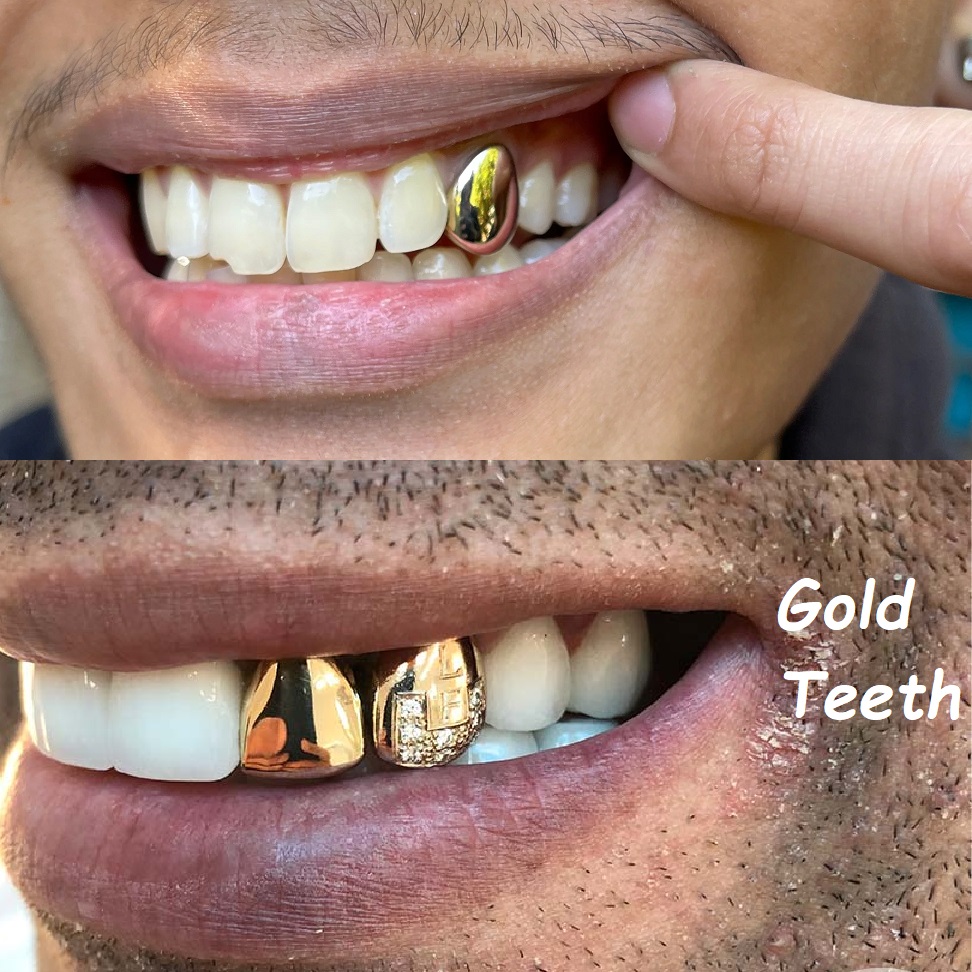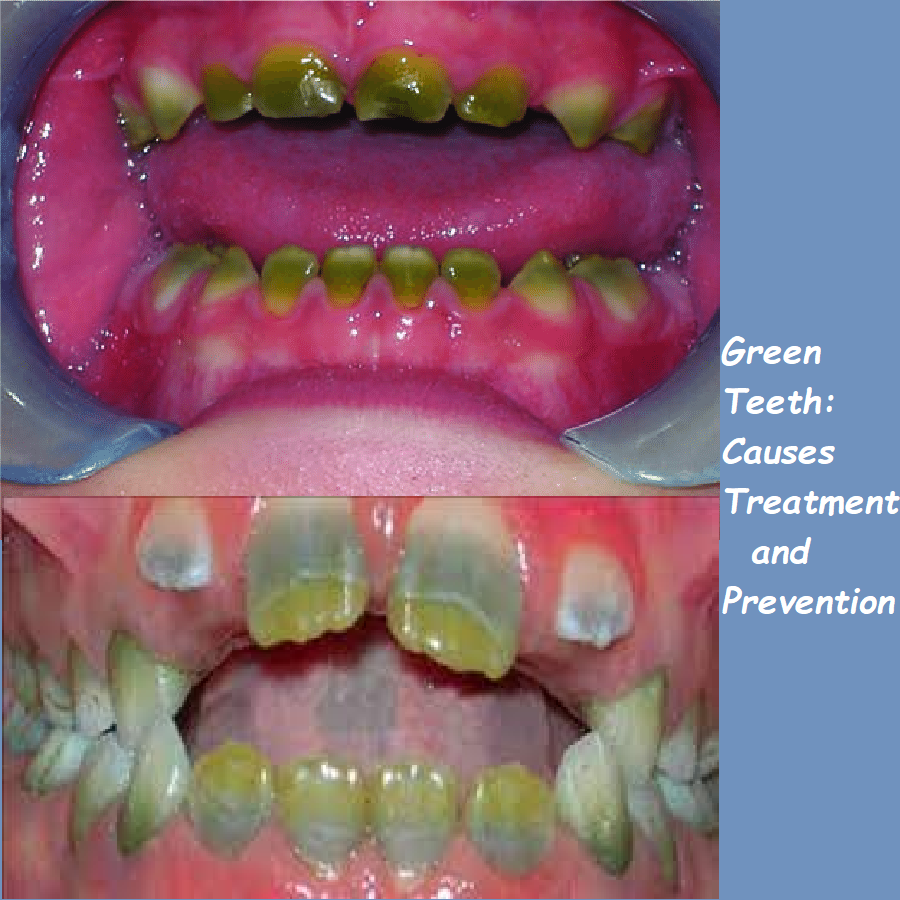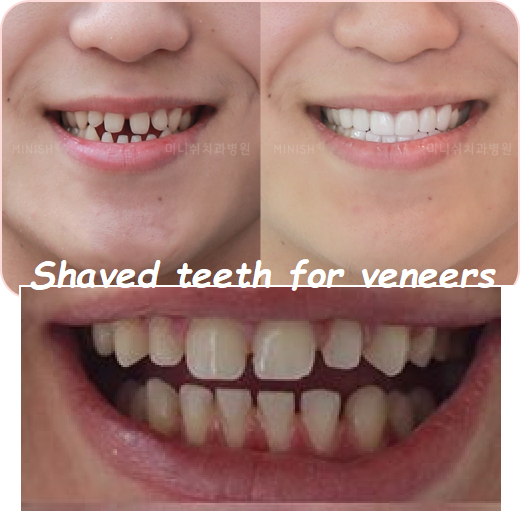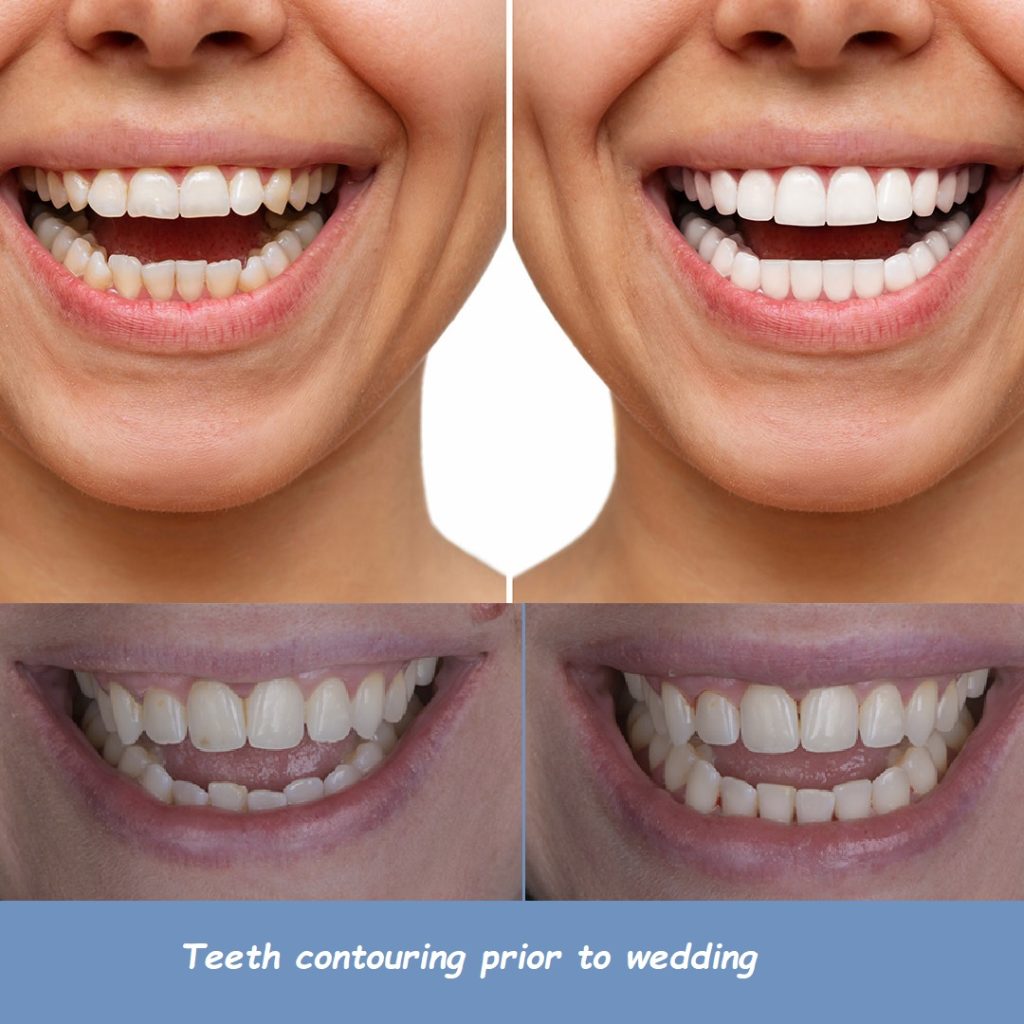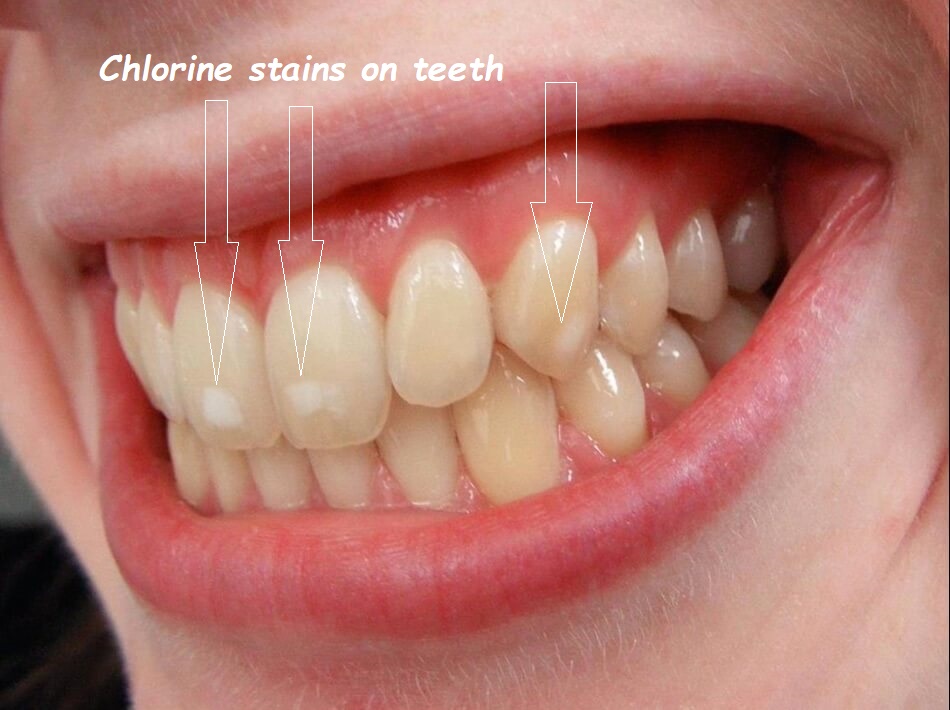front teeth crowns vs veneers
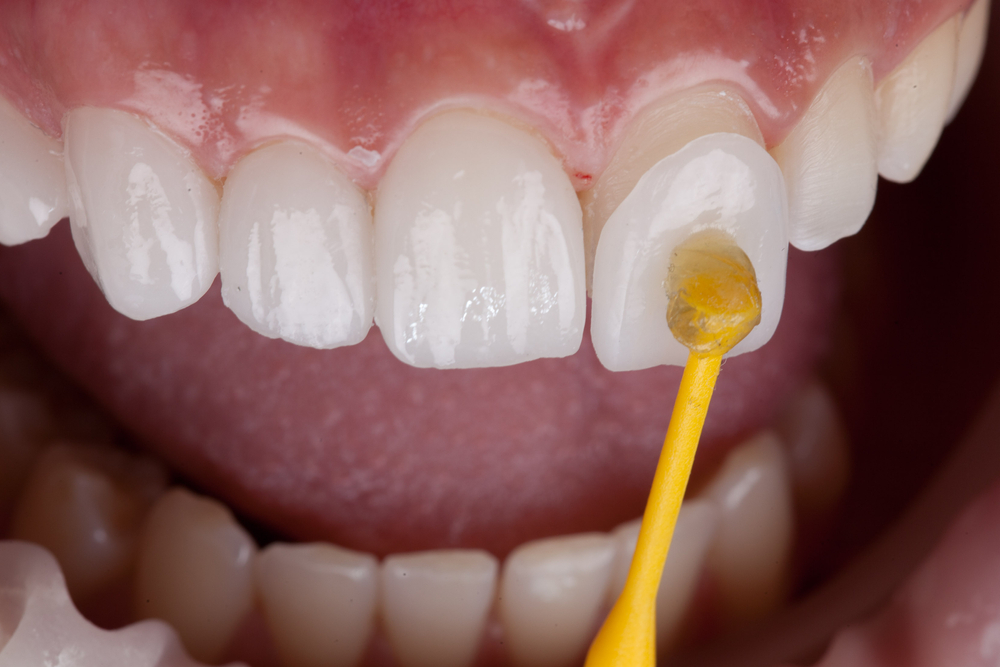
Front Teeth Crowns vs Veneers: A Comprehensive Comparison
When it comes to improving the appearance and functionality of your front teeth, two popular options are crowns and veneers. Both treatments can enhance your smile, but they differ in their application, benefits, and suitability for various dental issues. In this comprehensive guide, we will explore the key differences between front teeth crowns and veneers, helping you make an informed decision about which option is best for your dental needs.
What Are Front Teeth Crowns?
Front teeth crowns, also known as dental caps, are prosthetic restorations that cover the entire visible portion of a tooth. They are typically made from materials like porcelain, ceramic, or metal alloys. Crowns are used to restore teeth that are damaged, decayed, or structurally compromised.
1. Application and Procedure:
- Preparation: The process begins with the preparation of the tooth. This involves removing a portion of the tooth’s structure to make room for the crown. The amount of tooth reduction depends on the material used for the crown.
- Impression: After preparation, an impression of the tooth is taken and sent to a dental lab, where the crown is custom-made to fit your tooth precisely.
- Temporary Crown: While waiting for the permanent crown, a temporary crown is placed to protect the prepared tooth.
- Placement: Once the permanent crown is ready, the temporary crown is removed, and the new crown is cemented onto the tooth.
2. Benefits of Front Teeth Crowns:
- Strength and Durability: Crowns are highly durable and can withstand significant biting and chewing forces. They are suitable for teeth that are severely damaged or weakened.
- Aesthetic Improvement: Porcelain and ceramic crowns can be color-matched to your natural teeth, providing a seamless and natural appearance.
- Protection: Crowns protect the underlying tooth from further damage and decay, helping to preserve the tooth’s structure.
3. Suitability:
- Crowns are ideal for teeth that have been extensively damaged by decay, trauma, or large fillings.
- They are also used to restore teeth that have undergone root canal treatment, as these teeth are more prone to fracture.
What Are Front Teeth Veneers?
Front teeth veneers are thin shells of porcelain or composite resin that are bonded to the front surface of the teeth. Veneers are primarily used for cosmetic purposes, improving the appearance of teeth that are discolored, chipped, misaligned, or have minor structural issues.
1. Application and Procedure:
- Preparation: The process involves minimal tooth preparation. A small amount of enamel is removed from the front surface of the tooth to accommodate the veneer.
- Impression: An impression of the tooth is taken and sent to a dental lab, where the veneer is custom-made to fit the tooth.
- Temporary Veneer: In some cases, a temporary veneer may be placed while waiting for the permanent veneer.
- Placement: Once the permanent veneer is ready, it is bonded to the tooth using a special adhesive. The dentist ensures a precise fit and makes any necessary adjustments.
2. Benefits of Front Teeth Veneers:
- Aesthetic Enhancement: Veneers provide a natural and attractive appearance, effectively covering imperfections such as stains, chips, and gaps.
- Minimal Invasiveness: Veneers require less tooth preparation compared to crowns, preserving more of the natural tooth structure.
- Customizable: Veneers are custom-made to match the color, shape, and size of your natural teeth, ensuring a harmonious and beautiful smile.
3. Suitability:
- Veneers are ideal for patients seeking cosmetic improvements for issues like discoloration, minor chips, and gaps.
- They are not suitable for teeth that are severely damaged or weakened, as they do not provide the same level of structural support as crowns.
Comparing Front Teeth Crowns vs Veneers
To help you understand the key differences between front teeth crowns and veneers, let’s compare them across several important factors:
1. Purpose and Function:
- Crowns: Primarily used for restorative purposes, crowns provide strength and protection to damaged or weakened teeth. They restore the tooth’s function and appearance.
- Veneers: Mainly used for cosmetic purposes, veneers enhance the appearance of teeth by covering imperfections. They improve the smile’s aesthetics without significantly altering the tooth’s structure.
2. Tooth Preparation:
- Crowns: Require more extensive tooth preparation, involving the removal of a significant portion of the tooth’s structure.
- Veneers: Involve minimal tooth preparation, with only a small amount of enamel removed from the front surface of the tooth.
3. Durability and Longevity:
- Crowns: Highly durable and can last 10-15 years or more with proper care. They are suitable for teeth subjected to significant biting and chewing forces.
- Veneers: Durable but less so than crowns. They typically last 7-15 years, depending on the material and care. Veneers are best suited for front teeth with lower biting forces.
4. Aesthetic Results:
- Crowns: Provide excellent aesthetic results, especially when made from porcelain or ceramic. They can be color-matched to your natural teeth and blend seamlessly with your smile.
- Veneers: Offer superior aesthetic results due to their thin and translucent design. Veneers closely mimic the appearance of natural tooth enamel, providing a beautiful and natural-looking smile.
5. Cost:
- Crowns: Generally more expensive than veneers due to the more extensive preparation, material, and lab work involved.
- Veneers: Typically less expensive than crowns, but the cost can vary depending on the material and the dentist’s expertise.
Pros and Cons of Front Teeth Crowns vs Veneers
To further aid in your decision-making process, let’s explore the pros and cons of front teeth crowns vs veneers:
Pros of Front Teeth Crowns:
- Strength and Durability: Crowns provide superior strength and protection to damaged teeth, restoring their function and preventing further damage.
- Comprehensive Coverage: Crowns cover the entire visible portion of the tooth, making them suitable for teeth with extensive decay, large fillings, or fractures.
- Aesthetic Improvement: Porcelain and ceramic crowns offer excellent aesthetic results, closely resembling natural teeth.
Cons of Front Teeth Crowns:
- Extensive Preparation: The preparation process involves significant removal of tooth structure, which is irreversible.
- Cost: Crowns are generally more expensive than veneers, especially when made from high-quality materials like porcelain or ceramic.
- Potential Sensitivity: Some patients may experience temporary sensitivity after the tooth is prepared for a crown.
Pros of Front Teeth Veneers:
- Minimally Invasive: Veneers require minimal tooth preparation, preserving more of the natural tooth structure.
- Aesthetic Enhancement: Veneers provide a highly aesthetic result, effectively covering imperfections and enhancing the smile’s appearance.
- Customizable: Veneers are custom-made to match the color, shape, and size of your natural teeth, ensuring a harmonious and beautiful smile.
Cons of Front Teeth Veneers:
- Limited Durability: Veneers are less durable than crowns and may not be suitable for teeth subjected to significant biting or chewing forces.
- Not Suitable for Severely Damaged Teeth: Veneers do not provide the same level of structural support as crowns, making them unsuitable for teeth that are extensively damaged or weakened.
- Potential for Chipping: Although durable, veneers can chip or crack under excessive force or trauma.
Choosing Between Front Teeth Crowns vs Veneers
Deciding between front teeth crowns and veneers depends on your specific dental needs, cosmetic goals, and personal preferences. Here are some factors to consider when making your decision:
1. Dental Condition:
- If your front teeth are severely damaged, decayed, or weakened, crowns are the better option due to their strength and protective capabilities.
- If your front teeth are mostly healthy but have cosmetic imperfections such as discoloration, chips, or gaps, veneers may be the ideal solution for enhancing their appearance.
2. Aesthetic Goals:
- Both crowns and veneers can provide excellent aesthetic results, but veneers are often preferred for their natural and translucent appearance. If achieving a flawless, natural-looking smile is your primary goal, veneers may be the better choice.
3. Tooth Preparation:
- If preserving as much of the natural tooth structure as possible is important to you, veneers are the less invasive option, requiring minimal tooth preparation.
- If you are willing to undergo more extensive tooth preparation for a durable and protective restoration, crowns may be the better fit.
4. Budget:
- Cost can be a significant factor in your decision. Crowns are generally more expensive than veneers, so if budget is a concern, veneers might be a more affordable option.
- However, it is essential to consider the long-term investment and the potential need for future replacements or repairs.
5. Dentist’s Recommendation:
- Your dentist’s expertise and recommendation should play a crucial role in your decision. They can evaluate your dental condition, discuss your goals, and provide professional advice on the most suitable option for your needs.
Conclusion
Both front teeth crowns and veneers offer effective solutions for enhancing the appearance and functionality of your smile. Understanding the differences between these two options, including their applications, benefits, and limitations, is essential for making an informed decision.
Front teeth crowns provide strength, durability, and comprehensive coverage for severely damaged or weakened teeth. They are ideal for restoring the function and appearance of teeth with extensive decay, large fillings, or fractures.
Front teeth veneers, on the other hand, offer a minimally invasive and highly aesthetic solution for improving the appearance of healthy teeth with minor cosmetic imperfections. Veneers provide a natural and beautiful result, making them an excellent choice for enhancing your smile’s aesthetics.
Ultimately, the best choice between front teeth crowns and veneers depends on your specific dental needs, cosmetic goals, and personal preferences. Consulting with a skilled and experienced dentist will help you determine the most suitable option for achieving the smile you desire.
Is a Crown or Veneer Better for Front Teeth?
Deciding whether a crown or a veneer is better for your front teeth depends on various factors, including the condition of your teeth, your cosmetic goals, and your dentist’s recommendation. Here’s an in-depth comparison to help you make an informed decision:
1. Condition of the Teeth:
- Crowns: Crowns are ideal for teeth that are severely damaged, decayed, or structurally compromised. If your front tooth has a large filling, a fracture, or has undergone a root canal treatment, a crown would be the better option. Crowns encase the entire tooth, providing strength and protection.
- Veneers: Veneers are more suitable for teeth that are mostly healthy but have cosmetic imperfections such as discoloration, minor chips, or slight misalignments. Veneers cover only the front surface of the tooth and are less invasive than crowns.
2. Aesthetic Goals:
- Crowns: Modern crowns, especially those made from porcelain or ceramic, can offer excellent aesthetic results. They can be color-matched to your natural teeth and shaped to blend seamlessly with your smile.
- Veneers: Veneers are often preferred for their superior aesthetic appeal. They are thin and translucent, closely mimicking the appearance of natural tooth enamel. Veneers are highly customizable in terms of color, shape, and size, making them ideal for achieving a flawless smile.
3. Tooth Preparation:
- Crowns: The preparation for a crown involves removing a significant amount of the tooth’s structure to accommodate the crown. This process is more invasive and irreversible.
- Veneers: Veneers require minimal tooth preparation. Only a small amount of enamel is removed from the front surface of the tooth, preserving more of the natural tooth structure. This makes veneers a less invasive option.
4. Durability and Functionality:
- Crowns: Crowns are highly durable and can withstand significant biting and chewing forces. They are designed to restore the function of a damaged tooth, making them suitable for both front and back teeth.
- Veneers: While veneers are durable, they are more susceptible to chipping or cracking compared to crowns. Veneers are best suited for the front teeth, which experience less biting force.
5. Reversibility:
- Crowns: Once a tooth is prepared for a crown, the process is irreversible due to the significant reduction of tooth structure.
- Veneers: The minimal preparation required for veneers makes the process somewhat reversible, but removal would still require some restorative work to protect the tooth.
In conclusion, crowns are better for front teeth that need significant structural support and protection, while veneers are better for enhancing the appearance of healthy teeth with minor cosmetic issues. Your dentist can help you determine which option is best based on the condition of your teeth and your desired outcome.
Which Lasts Longer: Veneers or Crowns?
The longevity of both veneers and crowns depends on several factors, including the materials used, the skill of the dentist, and how well you take care of them. Here’s a detailed comparison:
1. Longevity of Veneers:
- Porcelain Veneers: Porcelain veneers typically last between 10 to 15 years. With proper care, some veneers can last even longer. Porcelain is a durable material that resists staining and mimics the translucency of natural teeth.
- Composite Resin Veneers: Composite resin veneers have a shorter lifespan, usually lasting around 5 to 7 years. They are more prone to staining and wear compared to porcelain veneers.
2. Longevity of Crowns:
- Porcelain Crowns: Porcelain crowns can last 10 to 15 years or more with proper care. They are strong and resistant to wear, making them suitable for both front and back teeth.
- Porcelain-Fused-to-Metal Crowns: These crowns have a metal core for added strength and a porcelain exterior for aesthetics. They can last 10 to 20 years, depending on the wear and tear they experience.
- All-Metal Crowns: Although not typically used for front teeth due to aesthetic reasons, all-metal crowns (like gold) are extremely durable and can last over 20 years.
3. Factors Affecting Longevity:
- Oral Hygiene: Good oral hygiene practices, including regular brushing, flossing, and dental check-ups, are crucial for the longevity of both veneers and crowns.
- Biting and Chewing Habits: Avoiding habits that can damage your dental work, such as chewing on hard objects (ice, pens, etc.) or grinding your teeth, will help prolong the life of both veneers and crowns.
- Diet: A diet low in sugary and acidic foods can help prevent decay and gum disease, which can affect the lifespan of veneers and crowns.
- Professional Maintenance: Regular visits to the dentist for professional cleanings and inspections can help catch any issues early and maintain the health of your dental restorations.
In summary, both veneers and crowns can last a long time with proper care, but crowns generally have a longer lifespan, especially those made from durable materials like porcelain-fused-to-metal or all-metal. Porcelain veneers offer excellent longevity as well, particularly for cosmetic purposes on front teeth.
Are Crowns Cheaper Than Veneers?
The cost of crowns and veneers can vary based on several factors, including the materials used, the complexity of the procedure, and the location of the dental practice. Here’s a detailed look at the costs associated with each:
1. Cost of Crowns:
- Porcelain Crowns: These are one of the most expensive types of crowns due to their aesthetic appeal and durability. The cost can range from $800 to $3,000 per tooth.
- Porcelain-Fused-to-Metal Crowns: These crowns are generally less expensive than all-porcelain crowns, with costs ranging from $500 to $1,500 per tooth.
- All-Metal Crowns: Typically less expensive than porcelain options, with costs ranging from $600 to $2,500 per tooth, depending on the type of metal used.
2. Cost of Veneers:
- Porcelain Veneers: Porcelain veneers are generally more expensive than crowns, ranging from $900 to $2,500 per tooth. The high cost is due to the material and the detailed lab work required to create them.
- Composite Resin Veneers: These veneers are less expensive than porcelain veneers, with costs ranging from $250 to $1,500 per tooth. They are more affordable but have a shorter lifespan and less aesthetic appeal compared to porcelain veneers.
3. Factors Influencing Cost:
- Material: The type of material used for the crown or veneer significantly impacts the cost. Porcelain and high-quality ceramics are more expensive due to their superior aesthetics and durability.
- Location: Dental costs vary by geographic location. Practices in urban areas or regions with a higher cost of living typically charge more for dental procedures.
- Dentist’s Expertise: Dentists with specialized training and extensive experience may charge higher fees for their services.
- Additional Procedures: Costs can increase if additional procedures are needed, such as tooth preparation, temporary restorations, or treatments for underlying dental issues.
4. Insurance Coverage:
- Crowns: Dental insurance often covers a portion of the cost of crowns, especially if they are deemed medically necessary for restoring tooth function and preventing further damage.
- Veneers: Veneers are usually considered a cosmetic procedure, and many dental insurance plans do not cover them. It’s important to check with your insurance provider to understand your coverage options.
In conclusion, crowns can sometimes be cheaper than veneers, particularly when considering porcelain-fused-to-metal or all-metal crowns compared to porcelain veneers. However, the overall cost depends on various factors, including materials, location, and the dentist’s expertise.
Is It OK to Crown Front Teeth?
Crowning front teeth is a common and acceptable dental procedure, especially when necessary to restore function, aesthetics, or protect the tooth from further damage. Here’s a detailed explanation of when and why it’s okay to crown front teeth:
1. Reasons for Crowning Front Teeth:
- Severe Decay: If a front tooth has extensive decay that cannot be adequately restored with a filling, a crown may be necessary to protect the tooth and restore its function.
- Fractures or Cracks: Front teeth that are cracked or fractured, particularly if the damage extends to the tooth’s root, often require crowns to hold the tooth together and prevent further damage.
- Large Fillings: When a front tooth has a large filling that compromises its structure, crowning the tooth provides additional strength and protection.
- Root Canal Treatment: Teeth that have undergone root canal treatment are more brittle and prone to fracture. Crowning a front tooth after a root canal helps protect it and restore its natural appearance.
- Aesthetic Improvement: Crowns can also be used for cosmetic purposes, such as correcting the shape, size, or color of a front tooth, especially if it is significantly discolored or misshapen.
2. Aesthetic Considerations:
- Natural Appearance: Modern crowns, particularly those made from all-porcelain or ceramic, can be color-matched to your natural teeth, providing a seamless and natural look. These materials mimic the translucency and light-reflecting properties of natural tooth enamel.
- Customization: Crowns for front teeth are custom-made to match the shape, size, and color of your existing teeth, ensuring they blend well with your smile.
3. Functional Benefits:
- Strength and Protection: Crowning a front tooth provides added strength and protection, preventing further damage and preserving the tooth’s structure.
- Improved Function: Crowns restore the function of a damaged front tooth, allowing you to bite and chew properly without discomfort or risk of further damage.
4. Potential Concerns:
- Tooth Preparation: Crowning a front tooth requires removing a significant amount of tooth structure, which is irreversible. However, this is necessary to ensure the crown fits properly and functions correctly.
- Sensitivity: Some patients may experience temporary sensitivity after the tooth is prepared for a crown. This typically resolves after the permanent crown is placed.
- Cost: Crowns, especially those made from high-quality materials like porcelain or ceramic, can be expensive. However, the benefits of protecting and restoring the tooth often outweigh the cost.
5. Alternatives to Crowns:
- Veneers: For cosmetic improvements, veneers might be an alternative to crowns if the tooth is healthy and only needs minor aesthetic adjustments.
- Bonding: Dental bonding can be used to repair minor chips and cracks or improve the appearance of a front tooth. It is less invasive than crowning but not as durable.
In summary, it is perfectly acceptable and often necessary to crown front teeth, particularly when dealing with severe decay, fractures, large fillings, or following root canal treatment. Crowns provide strength, protection, and aesthetic improvement, ensuring the health and appearance of your smile. Your dentist can help you determine if a crown is the best option for your front tooth based on its condition and your specific needs.
Do Celebrities Get Crowns or Veneers?
Celebrities often undergo cosmetic dental treatments to enhance their smiles, and both crowns and veneers are popular options. The choice between crowns and veneers depends on the celebrity’s specific dental needs and aesthetic goals:
1. Crowns:
- Purpose: Celebrities may opt for crowns if they have front teeth that are severely damaged, decayed, or structurally compromised. Crowns provide strength, durability, and protection to restore the function of damaged teeth.
- Aesthetic Enhancement: Crowns can also be used for cosmetic purposes, particularly for teeth with large fillings, fractures, or discoloration that cannot be corrected with more conservative treatments.
2. Veneers:
- Purpose: Veneers are popular among celebrities for their ability to enhance the appearance of healthy teeth with minor imperfections. They are thin shells of porcelain or composite resin that cover the front surface of the teeth, improving their color, shape, and alignment.
- Natural Appearance: Porcelain veneers are highly customizable and mimic the natural translucency and texture of tooth enamel, providing a natural-looking smile that photographs well and looks flawless on camera.
3. Celebrity Trends:
- Preference for Veneers: Many celebrities prefer veneers for their aesthetic benefits, as they can create a beautiful, uniform smile without the need for extensive tooth preparation.
- Customization: Celebrities often choose veneers because they can be customized to match their facial features and personal preferences, including tooth shade, shape, and size.
4. Combination Approach:
- Comprehensive Smile Makeovers: Some celebrities may undergo a combination of crowns and veneers as part of a comprehensive smile makeover. This approach allows them to address both functional and aesthetic concerns while achieving a natural-looking and stunning smile.
In summary, whether celebrities opt for crowns or veneers depends on their individual dental needs and desired cosmetic outcomes. Both treatments are effective in transforming smiles and are chosen based on factors such as tooth condition, treatment goals, and aesthetic preferences.
Does a Front Tooth Crown Look Natural?
The natural appearance of a front tooth crown depends on several factors, including the materials used, the skill of the dentist, and the tooth’s location in the mouth. Here’s an in-depth look at what influences the natural look of a front tooth crown:
1. Choice of Material:
- Porcelain or Ceramic: These materials are highly preferred for front tooth crowns because they closely mimic the natural translucency and color variation of tooth enamel. Porcelain crowns can be color-matched to your natural teeth, ensuring a seamless blend with your smile.
- Porcelain-Fused-to-Metal (PFM): PFM crowns have a metal core covered with porcelain. While they offer strength and durability, the metal substructure may affect the crown’s ability to transmit light, potentially making it less natural-looking compared to all-porcelain crowns.
- All-Metal Crowns: These crowns, such as gold or other alloys, are durable but are not typically used for front teeth due to their metallic appearance.
2. Dentist’s Skill and Experience:
- Aesthetic Dentistry Expertise: A skilled cosmetic dentist understands the importance of achieving a natural appearance with dental restorations. They will carefully design and place the crown to ensure it blends harmoniously with your surrounding teeth.
- Customization: The dentist will consider factors such as tooth color, shape, size, and alignment when creating and placing the crown. This customization is crucial for achieving a natural-looking result.
3. Tooth Preparation:
- Minimal Tooth Preparation: Modern techniques allow for more conservative tooth preparation, preserving more of the natural tooth structure. This minimizes the risk of a bulky or unnatural-looking crown.
- Temporary Crown: A temporary crown may be placed while the permanent crown is being fabricated. This interim restoration helps protect the prepared tooth and allows the patient to evaluate the appearance and fit before the final crown is placed.
4. Adjacent Teeth and Smile Harmony:
- Color Matching: The dentist will carefully match the color and shade of the crown to your natural teeth. They may use shade guides and digital imaging to ensure an accurate match.
- Texture and Contour: The crown’s texture and contour should resemble natural tooth enamel. It should reflect light similarly to surrounding teeth, enhancing the overall aesthetic harmony of your smile.
5. Long-Term Appearance:
- Stain Resistance: Porcelain crowns are highly resistant to staining, maintaining their natural appearance over time. Proper oral hygiene and regular dental visits are essential for preserving the crown’s aesthetics.
- Gingival Health: The crown’s margin (where it meets the gumline) should be carefully placed to promote healthy gums and a natural-looking transition between the crown and the gum tissue.
In conclusion, a front tooth crown can look very natural when crafted from high-quality porcelain or ceramic materials and placed by a skilled cosmetic dentist. The key factors influencing the natural appearance include material choice, dentist’s expertise, tooth preparation, and overall smile harmony.
What Are the Disadvantages of Crowns?
While crowns offer numerous benefits, there are several potential disadvantages to consider when choosing this dental restoration option. Here’s an in-depth exploration of the disadvantages of crowns:
1. Irreversible Procedure:
- Tooth Preparation: Crowning a tooth requires removing a significant amount of tooth structure to accommodate the crown. This process is irreversible, meaning the tooth will always need a crown to protect it in the future.
2. Potential Sensitivity:
- Temporary Sensitivity: Some patients may experience temporary sensitivity after the tooth is prepared for a crown. This sensitivity typically resolves once the permanent crown is placed and the tooth adjusts to the restoration.
3. Risk of Complications:
- Fracture Risk: While crowns are designed to protect and strengthen teeth, there is a risk of fracture, especially if the underlying tooth structure is weak or compromised.
- Loosening or Dislodgement: In rare cases, a crown may become loose or dislodged due to issues with cementation, biting forces, or underlying tooth conditions.
4. Aesthetic Considerations:
- Color Matching: Achieving a natural appearance with a crown requires careful color matching to blend seamlessly with your natural teeth. Poor color matching or a mismatch in shade can affect the aesthetic outcome.
- Gum Recession: Improper placement of the crown’s margin (where it meets the gumline) can lead to gum recession over time, exposing the crown’s metal or affecting the overall appearance.
5. Long-Term Maintenance:
- Potential for Wear: Over time, crowns may experience wear or damage, particularly if subjected to excessive biting forces or grinding habits. Regular dental check-ups are essential to monitor the condition of the crown and address any concerns promptly.
- Replacement: Crowns may need to be replaced eventually due to wear, damage, or changes in the surrounding teeth. This replacement process involves additional tooth preparation and restoration.
6. Cost Considerations:
- Initial Investment: Crowns can be more expensive than other dental restorations, especially when made from high-quality materials like porcelain or ceramic. The cost may vary based on the complexity of the procedure and the dentist’s expertise.
7. Alternative Options:
- Conservative Treatments: Depending on the tooth’s condition, less invasive options such as veneers, bonding, or inlays/onlays may be considered before opting for a crown.
- Longevity and Durability: While crowns are durable and long-lasting with proper care, they may not be suitable for all dental conditions or aesthetic concerns.
In summary, while crowns offer significant benefits such as strength, protection, and aesthetic enhancement, it is essential to consider the potential disadvantages and risks associated with this dental restoration option. Consulting with a qualified dentist will help you determine if crowns are the best solution for your dental needs and overall oral health.
What Looks More Natural: Veneers or Crowns?
When considering which dental restoration looks more natural, both veneers and crowns can achieve a natural appearance when properly designed, crafted, and placed by a skilled dentist. Here’s an in-depth comparison to help you understand the natural aesthetics of veneers versus crowns:
1. Veneers:
- Material and Design: Porcelain veneers are highly preferred for their ability to mimic the natural translucency, texture, and color variations of tooth enamel. The thin shells are custom-made to cover the front surface of teeth, enhancing their appearance without significantly altering their structure.
- Minimal Tooth Preparation: Veneers require minimal tooth preparation, typically involving the removal of a thin layer of enamel from the front surface of the tooth. This conservative approach preserves more of the natural tooth structure.
2. Crowns:
- Material and Application: Crowns can be made from various materials, including porcelain, ceramic, porcelain-fused-to-metal (PFM), or all-metal alloys. Porcelain and ceramic crowns are preferred for front teeth due to their aesthetic qualities and ability to blend with natural teeth.
- Comprehensive Coverage: Crowns cover the entire visible portion of the tooth, providing strength, protection, and restoring the tooth’s function. They are suitable for teeth with extensive damage, large fillings, or structural issues.
3. Natural Appearance Factors:
- Translucency and Light Reflection: Both veneers and crowns can achieve a natural appearance by reflecting light similarly to natural tooth enamel. Porcelain materials are particularly effective in mimicking the translucency and luster of natural teeth.
- Color Matching: Achieving a seamless blend with surrounding teeth is crucial for a natural-looking result. Both veneers and crowns can be custom-colored to match your natural tooth shade, ensuring harmony within your smile.
4. Considerations for Aesthetic Enhancement:
- Cosmetic Improvements: Veneers are often chosen for their ability to enhance the appearance of healthy teeth with minor imperfections, such as discoloration, chips, or slight misalignment.
- Restorative Benefits: Crowns are preferred for teeth that require more extensive restoration, such as those with large cavities, fractures, or after root canal treatment. They provide comprehensive coverage and structural support.
5. Long-Term Aesthetics and Maintenance:
- Stain Resistance: Porcelain veneers and crowns are highly resistant to stains and discoloration, maintaining their natural appearance over time with proper care and oral hygiene practices.
- Gum Health: Proper placement of veneers and crowns is essential to maintain healthy gum tissue and achieve a natural-looking transition at the gumline.
In conclusion, both veneers and crowns can achieve natural-looking results when tailored to your specific dental needs and aesthetic goals. The choice between veneers and crowns depends on factors such as the condition of your teeth, the extent of restoration needed, and your desired cosmetic outcome. Consulting with a qualified cosmetic dentist will help you determine the most suitable option for enhancing your smile while achieving a natural appearance.
What Crown Is Best for Front Teeth?
Choosing the best crown for front teeth involves considering factors such as aesthetics, durability, and the specific needs of the tooth. Here’s an in-depth look at the types of crowns commonly used for front teeth and their benefits:
1. Porcelain Crowns:
- Aesthetic Appeal: Porcelain crowns are highly preferred for front teeth due to their ability to closely mimic the natural translucency and color of tooth enamel. They offer a seamless blend with surrounding teeth, enhancing the overall appearance of your smile.
- Stain Resistance: Porcelain is stain-resistant, maintaining its natural appearance over time with proper care and oral hygiene practices.
- Customization: Porcelain crowns can be custom-made to match the shape, size, and shade of your natural teeth, ensuring a harmonious and natural-looking result.
- Strength and Durability: Modern porcelain crowns are strong and durable, providing reliable protection and restoring the function of front teeth.
2. Porcelain-Fused-to-Metal (PFM) Crowns:
- Strength and Durability: PFM crowns have a metal substructure covered with porcelain, combining strength with aesthetic appeal. They are suitable for front teeth that require added durability and structural support.
- Aesthetic Considerations: While PFM crowns can achieve natural-looking results, the metal substructure may affect light transmission and the overall translucency of the crown compared to all-porcelain options.
3. All-Ceramic Crowns:
- Enhanced Aesthetics: All-ceramic crowns are crafted entirely from ceramic materials, offering superior aesthetic qualities and natural translucency. They provide a highly lifelike appearance that closely resembles natural tooth enamel.
- Biocompatibility: Ceramic crowns are biocompatible and suitable for patients with metal allergies or sensitivities.
- Minimal Tooth Preparation: Advances in dental technology allow for more conservative tooth preparation, preserving more of the natural tooth structure while achieving optimal aesthetics.
4. Factors Influencing Choice:
- Tooth Condition: The extent of damage or decay in the front tooth will influence the type of crown recommended by your dentist.
- Aesthetic Goals: Your desired cosmetic outcome, including tooth color, shape, and alignment, will guide the selection of the most suitable crown.
- Long-Term Maintenance: Consider the durability and longevity of the crown material, as well as the maintenance required to preserve its appearance and function over time.
5. Consultation with a Dentist:
- Customized Treatment Plan: Your dentist will evaluate your oral health, discuss your aesthetic preferences, and recommend the best crown option for your front teeth.
- Mock-Up and Trial: Some dental practices offer mock-ups or digital smile previews to visualize the expected outcome before proceeding with crown placement.
In summary, porcelain crowns, porcelain-fused-to-metal crowns, and all-ceramic crowns are all viable options for front teeth, each offering unique benefits in terms of aesthetics, durability, and customization. Your dentist will help you choose the best crown based on your individual needs and aesthetic goals, ensuring a natural-looking and functional smile.
3.5

